Table of Contents
Introduction
Today we will be exploring Dwarka: The Sunken Kingdom, often referred to as the “Golden City,” is a story that seamlessly merges myth, history, and modern discovery. This legendary city, supposedly founded by the divine figure Lord Krishna, holds a unique place in Hindu mythology. But is the Sunken Kingdom of Dwarka a real historical site or just an age-old fable? In this comprehensive exploration, we will delve into the origins, evidence, and theories surrounding this enigmatic city.
The Mythical Origins of the Sunken Kingdom of Dwarka
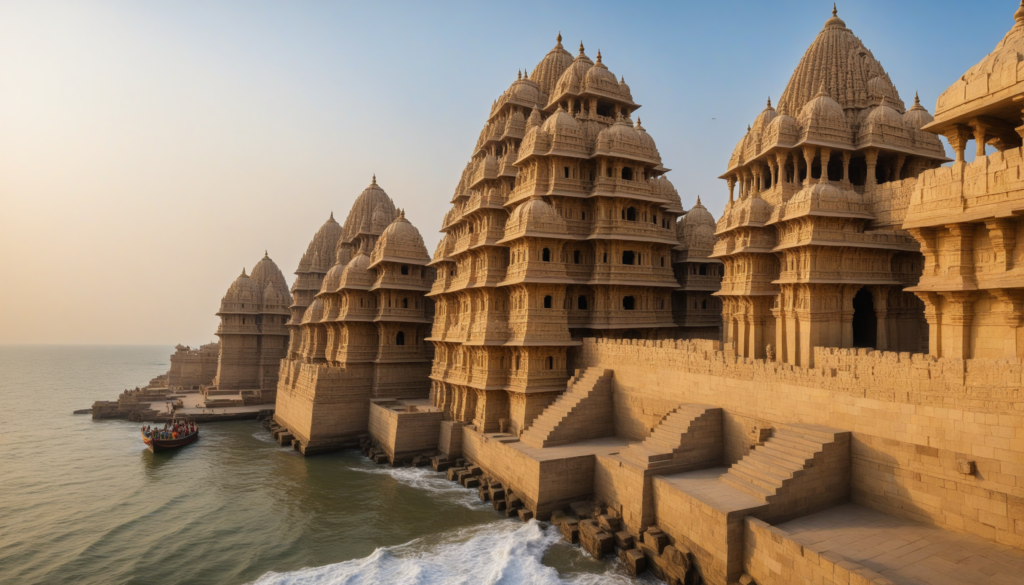
The Sunken Kingdom of Dwarka is deeply rooted in Hindu scriptures such as the Mahabharata, Vishnu Purana, and Harivamsa. According to these texts, Lord Krishna established Dwarka after leaving Mathura to protect his people. The city was described as a marvel of divine architecture, with structures made almost entirely of gold, grand palaces, lush gardens, and towering gates.
Dwarka was portrayed not just as a city but as a symbol of divine governance, peace, and prosperity. It was a vibrant hub of culture, trade, and spirituality, where people lived in harmony and abundance. However, the scriptures foretold a tragic end for the city. After Krishna’s death, it is said that Dwarka was engulfed by the ocean in a cataclysmic event, leaving behind a legendary narrative that has intrigued generations.
The Submersion of the Sunken Kingdom of Dwarka in Hindu Scriptures
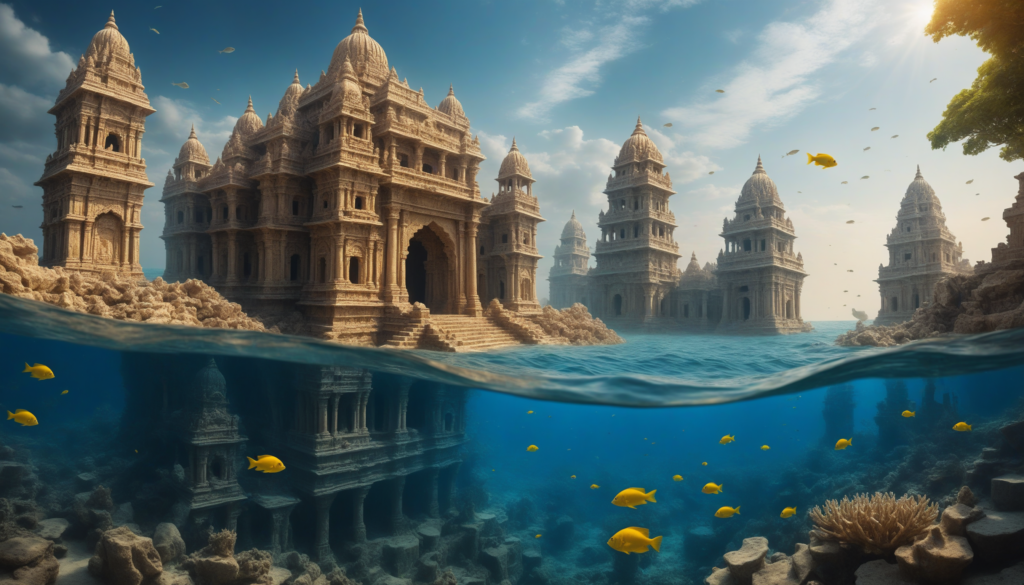
The Hindu scriptures vividly describe the submersion of Dwarka. The Vishnu Purana provides a detailed account:
“On the same day that Krishna departed from the earth, the powerful dark-bodied Kali Age descended. The oceans rose and submerged the whole of Dwarka. This is how the beloved city of Krishna was swallowed by the sea.” (Vishnu Purana, Book 5, Chapter 23)
Similarly, the Mahabharata narrates the city’s downfall with poetic elegance:
“The sea, which had been held back by the waves of arrows discharged by the son of Rohini (Balarama), now began to advance. At once the sea covered the beautiful city of Dwarka, which was full of wealth, precious stones, and jewels.” (Mahabharata, Mausala Parva, Chapter 7, Verses 40-41)
These texts not only describe the city’s submersion but also emphasize its grandeur and wealth. The loss of Dwarka is depicted as the end of an era of divine favor and cultural splendor.
Modern Evidence of the Sunken Kingdom of Dwarka
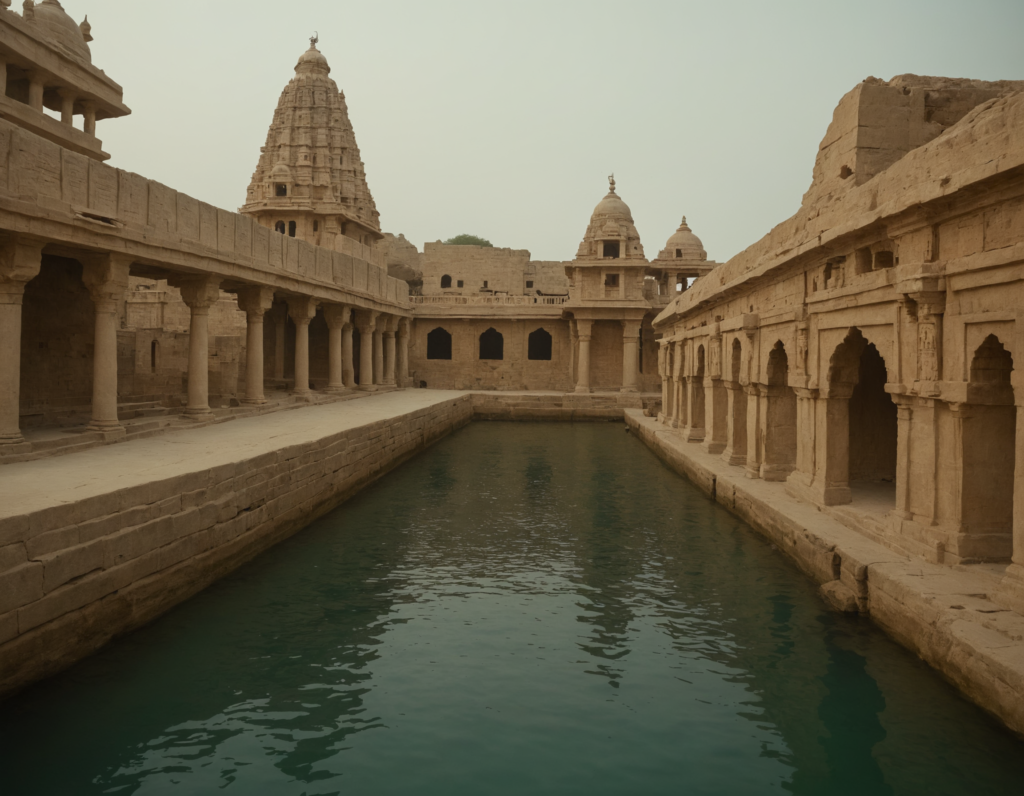
For many years, the Sunken Kingdom of Dwarka was considered a myth with no tangible evidence to support its existence. However, modern archaeological discoveries have provided compelling evidence. In the early 1980s, Indian marine archaeologist Dr. S. R. Rao led an expedition off the coast of Gujarat and uncovered the remains of an ancient city submerged beneath the Arabian Sea.
The underwater exploration revealed structures that resembled walls, pillars, and a grid-like pattern of streets, consistent with descriptions of Dwarka in ancient texts. Carbon dating of artifacts from the site suggests that the city dates back to around 1500 BCE, which aligns with the timeline traditionally associated with Krishna’s Dwarka.
This discovery challenges the notion that ancient stories are purely allegorical, suggesting instead that they may be based on historical events. The evidence supports the idea that Dwarka was a real city that eventually sank beneath the sea.
Theories on Why the Sunken Kingdom of Dwarka Sank
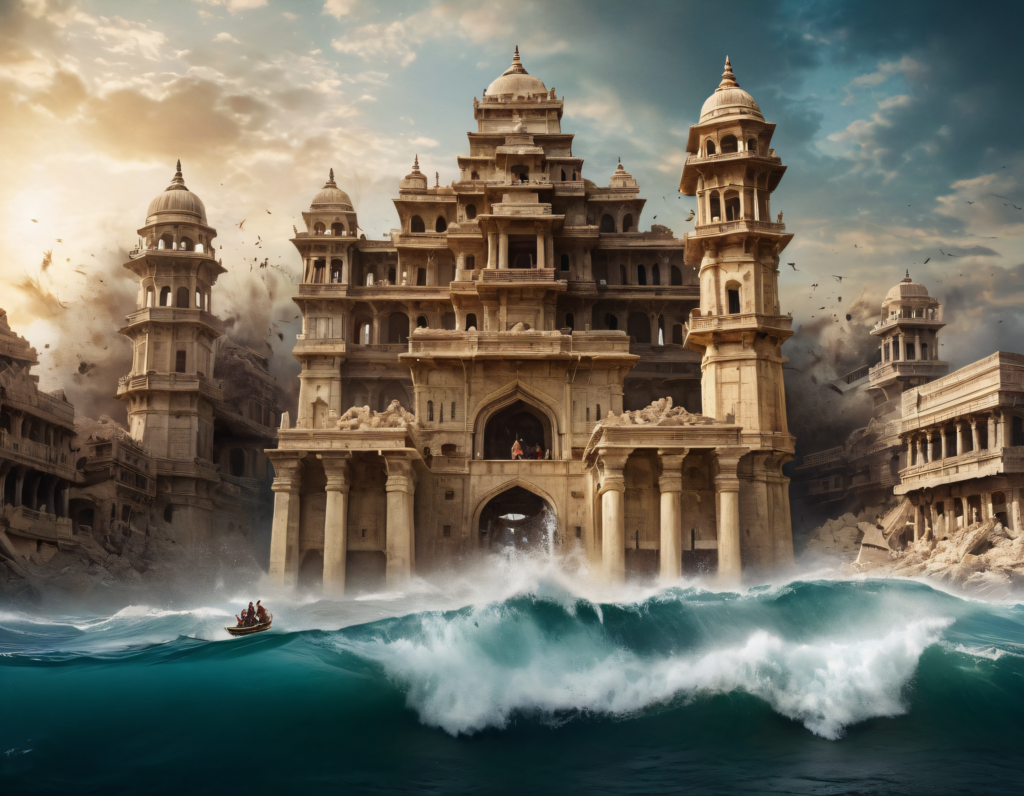
The exact reason for the submersion of Dwarka remains debated among scientists and historians. Several theories have been proposed:
- Earthquake Theory: One theory suggests that a massive earthquake may have caused the city to collapse into the sea. This is plausible given the seismic activity in the region around Dwarka.
- Rising Sea Levels: Another theory posits that a gradual rise in sea levels over centuries might have led to the city being engulfed. This theory is supported by similar events observed in other parts of the world during that period.
- Tsunami Theory: Some researchers speculate that a tsunami-like event, potentially triggered by an underwater earthquake or volcanic eruption, could have caused the city to sink suddenly. This theory accounts for the dramatic and sudden nature of the submersion described in ancient texts.
Regardless of the cause, the submersion of Dwarka highlights the vulnerability of civilizations to natural forces and serves as a powerful reminder of nature’s capacity to reshape history.
Incredible Discoveries from the Sunken Kingdom of Dwarka
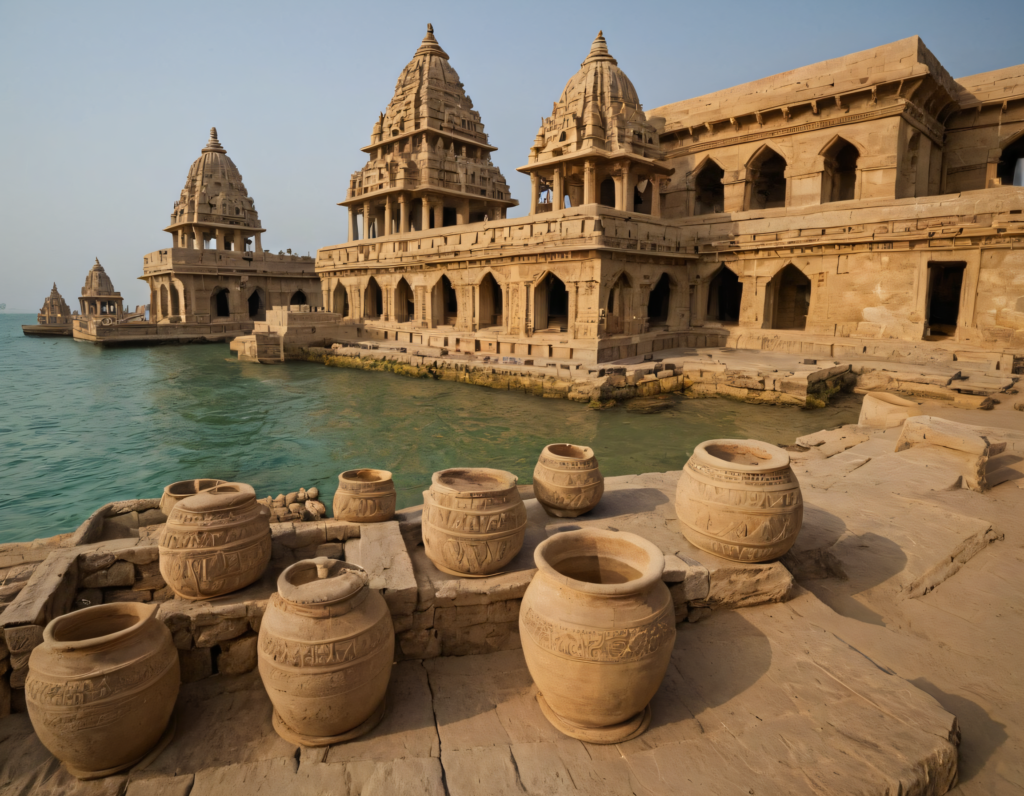
The underwater exploration of Dwarka has yielded several remarkable discoveries:
- Stone Anchors: Numerous stone anchors have been found, indicating that Dwarka was a significant port city with extensive maritime activity. These anchors suggest that the city was a major center for trade and commerce.
- Pottery and Ornaments: Pottery shards and ornaments found at the site reflect high levels of craftsmanship and suggest a prosperous society. The intricate designs and materials used point to a city with a high standard of living.
- Remnants of Buildings: Submerged structures resembling temples and public buildings have been discovered, hinting at the architectural grandeur of Dwarka. These findings are consistent with descriptions of the city in ancient texts.
- Human Remains: The discovery of skeletal remains provides insights into the diet, health, and lifestyle of Dwarka’s inhabitants, offering valuable clues about their daily lives and culture.
These discoveries have sparked significant interest and further research into the Sunken Kingdom of Dwarka, challenging traditional views of ancient Indian history.
A Thought-Provoking Reflection on the Sunken Kingdom of Dwarka
The story of the Sunken Kingdom of Dwarka transcends its role as a mere legend; it serves as a profound reflection on the impermanence of civilizations and the immense power of nature. The tale encourages us to consider how much of what we regard as myth might be rooted in historical reality, awaiting discovery by modern science and archaeology.
As our technology and methods of exploration advance, we may uncover more stories like that of Dwarka, revealing new aspects of our shared past. The narrative of Dwarka leaves us with a sense of awe—what other secrets might the oceans conceal, and how many more lost cities might be waiting to share their stories?
FAQs
1. What is the Sunken Kingdom of Dwarka? The Sunken Kingdom of Dwarka is a legendary city described in Hindu scriptures, said to have been founded by Lord Krishna and submerged by the sea after his death.
2. Where is Dwarka located? According to legends and modern discoveries, Dwarka was located off the coast of Gujarat in India, submerged beneath the Arabian Sea.
3. What evidence supports the existence of Dwarka? Evidence includes underwater structures, artifacts, and carbon-dated materials found off the coast of Gujarat, suggesting the city was real and dates back to around 1500 BCE.
4. Why did the Sunken Kingdom of Dwarka sink? Several theories exist, including a massive earthquake, rising sea levels, or a tsunami. The exact cause is still debated among scientists and historians.
5. What have underwater explorations revealed about Dwarka? Explorations have uncovered stone anchors, pottery, remnants of buildings, and human remains, providing insights into the city’s history, culture, and architecture.
Conclusion

The Sunken Kingdom of Dwarka represents a fascinating intersection of myth and reality, offering deep insights into ancient civilizations and natural forces. The evidence gathered from underwater explorations supports the notion that Dwarka was not just a legend but a real city with a rich historical background. As we continue to explore and uncover the mysteries of our past, the story of Dwarka stands as a powerful reminder of the fleeting nature of human achievements and the enduring intrigue of ancient myths.

Hurrah, that’s what I was exploring for, what
a data! present here at this blog, thanks admin of this
weeb page. http://boyarka-inform.com/